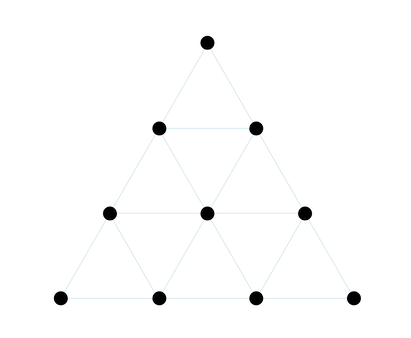
There is a curious detail in the Marseille Emperor’s throne, which always reminded me of a goofy-looking bird, a bit like the Roadrunner cartoon. Merely an accident of design…or is it? Jodo refers only to the eye-like, circular shape, as symbolic of ‘alchemical gold.’ He and Camoin also insist there was an egg (under eagle’s tail) in the Conver card, which they ‘restored,’ a topic of much debate in Tarot circles.

Details in Tarot imagery are known to get muddled or omitted, so it’s necessary to look at as many variations as possible, to try and put a picture together. Often it’s nothing, sometimes it’s something. In this case, it was the latter.
In the two versions below, you’d be forgiven for thinking the bird head on the back of the Emperor’s throne was just another eagle, being the imperial bird (and in the first card, it appears to be), except for a couple of other clues; in the 2nd card, the arm of the throne is clearly ‘feathered’ like a rooster’s tail. Also there is the fact that the brim of the Emperor’s helmet-crown is almost without exception consistent in its red colouring.

We could also make the connection to the alchemical basilisk, which symbolized the destructive fire preceding the transmutation of metals, as well as having the ability to kill with a glance, like Medusa (hence situated behind the Emperor, his shadow nature or hidden super-power). And, of course, the presence of Mercurius, the transmuter.

Now, the next question is, why? Why, when chickens are a medieval symbol of cowardice and avarice, and when the rooster in particular belongs to Mercury or Mars, would anyone associate the noble Emperor with poultry? Isn’t the Emperor an avatar of Jupiter??
Actually, Emperors and Gallus gallus go a long way back. No ancient Roman Emperor was without an assembly of sacred fowl. You see, in olden days, chickens were not bred for frying, but for fighting and alectryomancy, a form of augury. Chickens were used to predict the outcome of battles and, yup, who the next Emperor would be. We can see the military aspect of our Tarot Emperor, though he be seated in repose.

Alright, so what does the regal rooster have to do with de Zeus, if anything?
This is where it gets a bit esoteric, because TdM imagery is never this = that. We can find associations in the Emperor card to Jupiter (imperial eagle on his shield, sometimes a thunderbolt in his sceptre, bearded), Mars and Mercury (rooster, as mentioned), as well as the Sun (rooster, medieval 4th sphere, wears a radiate crown over his helmet), but what about Pluto? Pluto/Hades was, after all, an aspect of the Jupiterian triplicity, one of the ‘bros’.
While the other, major Greco-Roman gods were always busy doing – Mars at battle or cavorting with Venus, Mercury flying all over the place, Jupiter running Olympus between mythic, erm, conquests – it seems Pluto’s one, big event was the ‘abduction’ of his young bride, Persephone/Proserpine. After that, the god of subterranean riches pretty much just sits there on his Underworld throne or lies in repose at banquets for the newly-dead, right?

This is likely due to the abduction myth being a relatively late injection; Persephone had long presided in the underworld as part of a Goddess triplicity (with Demeter and Hekate), before the patriarchal gods usurped:
“There is an archaic role for Persephone as the dread queen of the Underworld, whose very name it was forbidden to speak. In the Odyssey, commonly dated circa 800 to 600 BCE, when Odysseus goes to the Underworld, he refers to her as the Iron Queen. Her central myth, for all its emotional familiarity, was also the tacit context of the secret initiatory mystery rites of regeneration at Eleusis, which promised immortality to their awe-struck participants—an immortality in her world beneath the soil, feasting with the heroes who dined beneath her dread gaze.”
Note the ‘dread gaze’ reference, again.

As it turns out, Hades/Pluto and Dionysus may have been one and the same (or syncretized). In this beautiful relief, we see that the cock and hen are familiars of Persephone and her consort, representing Springtime regeneration (and eggs!), when she emerges from the Earth to make it fecund, again. The ear of grain/wheat is another of her attributes (indeed she was the grain itself), and we see that the TdM Emperor wears a necklace (circle) of golden grain, just like Pluto/Dionysus wears on his head.
Going back to the subject of my previous post, every 4th card is also the 1st card of the next cycle of 3, the Empress being the first 3. Like Persephone, she embodies the cyclic, creative triplicity. The Emperor, in 4th place, represents the ‘death’ of the first cycle as well as the beginning of the next. Similarly, Winter is the 4th season, when the forces of life go underground.

The aging Emperor is typically shown in profile, facing the Empress/past and with his back to the next cards/future (if they were laid out in numerical order). He will not go further in his current form, but holding his sceptre erect, looks to his lady for renewal, while she, in turn, holds her sceptre to her womb.
Addendum: Hermes-Mercury’s travels famously included being a psychopomp, being the only god who had licence to travel back and forth between realms. So don’t worry, this is not to discount the rooster/chicken as possible presence of Mercury, significator of transition, alchemical, numerical or otherwise. Rather it is to draw attention to the Plutonian nature of the Emperor. Hermes-Mercury is present in every Major Arcana card of the TdM (more on that some other post). Interestingly, modern ‘evolutionary’ astrology sees planetary Pluto as having to do with both death and transformation. ~rb

All written content except quotation is copyright ©Roxanna Bikadoroff and may not be reused in whole or in part without permission. Feel free to share via LINK.




































































